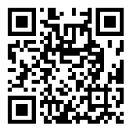其实网上有关office web app的整合已经有相关的文章了,典型的是如何整合Office Web Apps至自己开发的系统(一) 和如何整合Office Web Apps至自己开发的系统(二),微软官网也有相应的demo。
这里在简单描述一下原理吧:office web apps(owas)扮演者一个客服端,它会访问我们asp.net 站点的文件然后呈现出来。而我们常用的API主要有如下3个:
GET api/wopi/files/{name}?access_token={access_token}
GET api/wopi/files/{name}/contents?access_token={access_token}
POST api/wopi/files/{name}/contents?access_token={access_token}
至于每个API做什么 这里就不多说,第一个是owas 检查文件,传递的信息是json数据格式,第二个是owas获取文件流,第三个是owas post的文件流(保存修改文件)。首先我们来看看第一个API的实现:
[Route("files/{name}/")]
public CheckFileInfo GetFileInfo(string name, string access_token)
{
Validate(name, access_token);
var fileInfo = _fileHelper.GetFileInfo(name);
bool updateEnabled = false;
if (bool.TryParse(WebConfigurationManager.AppSettings["updateEnabled"].ToString(), out updateEnabled))
{
fileInfo.SupportsUpdate = updateEnabled;
fileInfo.UserCanWrite = updateEnabled;
fileInfo.SupportsLocks = updateEnabled;
}
return fileInfo;
}
这里的 Validate(name, access_token) 方法主要是验证请求的文件名name与参数access_token是否一致,主要是验证是否是非法访问,返回一个CheckFileInfo对象,CheckFileInfo的定义如下:
public class CheckFileInfo
{
public CheckFileInfo()
{
this.SupportsUpdate = false;
this.UserCanWrite = false;
}
public string BaseFileName { get; set; }
public string OwnerId { get; set; }
public long Size { get; set; } //in bytes
public string SHA256 { get; set; } //SHA256: A 256 bit SHA-2-encoded [FIPS180-2] hash of the file contents
public string Version { get; set; } //changes when file changes.
public bool SupportsUpdate { get; set; }
public bool UserCanWrite { get; set; }
public bool SupportsLocks { get; set; }
}
现在在来看看第二个api的实现,主要返回对应文件的数据流:
[Route("files/{name}/contents")]
public HttpResponseMessage Get(string name, string access_token)
{
try
{
Validate(name, access_token);
var file = HostingEnvironment.MapPath("~/App_Data/" + name);
var responseMessage = new HttpResponseMessage(HttpStatusCode.OK);
var stream = new FileStream(file, FileMode.Open, FileAccess.Read);
responseMessage.Content = new StreamContent(stream);
responseMessage.Content.Headers.ContentType = new MediaTypeHeaderValue("application/octet-stream");
return responseMessage;
}
catch (Exception ex)
{
var errorResponseMessage = new HttpResponseMessage(HttpStatusCode.InternalServerError);
var stream = new MemoryStream(UTF8Encoding.Default.GetBytes(ex.Message ?? ""));
errorResponseMessage.Content = new StreamContent(stream);
return errorResponseMessage;
}
}
而第三个api是将返回的数据流保存到物理文件:
[Route("files/{name}/contents")]
public async void Post(string name, [FromUri] string access_token)
{
var body = await Request.Content.ReadAsByteArrayAsync();
var appData = HostingEnvironment.MapPath("~/App_Data/");
var fileExt = name.Substring(name.LastIndexOf('.') + );
var outFile = Path.Combine(appData,name);
File.WriteAllBytes(outFile, body);
}
现在我们再来看看如何请求owas,也就是对应的url是怎么产生的。例如我的owas server是owas.contoso.com,那么我们在配置好owas后就可以访问http://owas.contoso.com/hosting/discovery 如图:

这里我们以excel为例 大家看到上面有view、edit、mobileview三个action,这里的app是一个excel,我们知道我们物理文件的后缀找到相应的app,在根据我们系统的配置采用edit还是view action,如果是pdf 我们只能采用对应的view,如果请求是mobile发起的话, 那么我们只能用mobileview。 找到相应的action后我们就获取到对应的urlsrc属性,这里我们实际需要的url地址是 http://owas.contoso.com/x/_layouts/xlviewerinternal.aspx这个东东。那么获取这个url的代码如下:
public class LinkController : ApiController
{
/// <summary>
/// Provides a link that can be used to Open a document in the relative viewer
/// from the Office Web Apps server
/// </summary>
/// <param name="fileRequest">indicates the request type</param>
/// <returns>A link usable for HREF</returns>
public Link GetLink([FromUri] FileRequest fileRequest)
{
if (ModelState.IsValid)
{
var xml = WebConfigurationManager.AppSettings["appDiscoveryXml"];
var wopiServer = WebConfigurationManager.AppSettings["appWopiServer"];
bool updateEnabled = false;
bool.TryParse(WebConfigurationManager.AppSettings["updateEnabled"], out updateEnabled);
WopiAppHelper wopiHelper = new WopiAppHelper(HostingEnvironment.MapPath(xml), updateEnabled); var result = wopiHelper.GetDocumentLink(wopiServer + fileRequest.name); var rv = new Link
{
Url = result
};
return rv;
} throw new ApplicationException("Invalid ModelState");
}
} public class WopiAppHelper
{
string _discoveryFile;
bool _updateEnabled = false;
WopiHost.wopidiscovery _wopiDiscovery; public WopiAppHelper(string discoveryXml)
{
_discoveryFile = discoveryXml; using (StreamReader file = new StreamReader(discoveryXml))
{
XmlSerializer reader = new XmlSerializer(typeof(WopiHost.wopidiscovery));
var wopiDiscovery = reader.Deserialize(file) as WopiHost.wopidiscovery;
_wopiDiscovery = wopiDiscovery;
}
} public WopiAppHelper(string discoveryXml, bool updateEnabled)
: this(discoveryXml)
{
_updateEnabled = updateEnabled;
} public WopiHost.wopidiscoveryNetzoneApp GetZone(string AppName)
{
var rv = _wopiDiscovery.netzone.app.Where(c => c.name == AppName).FirstOrDefault();
return rv;
} public string GetDocumentLink(string wopiHostandFile)
{
var fileName = wopiHostandFile.Substring(wopiHostandFile.LastIndexOf('/') + );
var accessToken = GetToken(fileName);
var fileExt = fileName.Substring(fileName.LastIndexOf('.') + );
var netzoneApp = _wopiDiscovery.netzone.app.AsEnumerable()
.Where(c => c.action.Where(d => d.ext == fileExt).Count() > ); var appName = netzoneApp.FirstOrDefault(); if (null == appName) throw new ArgumentException("invalid file extension " + fileExt); var rv = GetDocumentLink(appName.name, fileExt, wopiHostandFile, accessToken); return rv;
} string GetToken(string fileName)
{
KeyGen keyGen = new KeyGen();
var rv = keyGen.GetHash(fileName); return HttpUtility.UrlEncode(rv);
} const string s_WopiHostFormat = "{0}?WOPISrc={1}&access_token={2}";
//HACK:
const string s_WopiHostFormatPdf = "{0}?PdfMode=1&WOPISrc={1}&access_token={2}"; public string GetDocumentLink(string appName, string fileExtension, string wopiHostAndFile, string accessToken)
{
var wopiHostUrlsafe = HttpUtility.UrlEncode(wopiHostAndFile.Replace(" ", "%20"));
var appStuff = _wopiDiscovery.netzone.app.Where(c => c.name == appName).FirstOrDefault(); if (null == appStuff)
throw new ApplicationException("Can't locate App: " + appName); var action = _updateEnabled ? "edit" : "view";
if (appName.Equals("WordPdf"))
{
action = "view";
}
if (HttpContext.Current.Request.Browser.IsMobileDevice)
{
action = "mobileView";
}
var appAction = appStuff.action.Where(c => c.ext == fileExtension && c.name == action).FirstOrDefault(); if (null == appAction)
throw new ApplicationException("Can't locate UrlSrc for : " + appName); var endPoint = appAction.urlsrc.IndexOf('?');
var endAction = appAction.urlsrc.Substring(, endPoint); string fullPath = null;
////HACK: for PDF now just append WordPdf option...
if (fileExtension.Contains("pdf"))
{
fullPath = string.Format( s_WopiHostFormatPdf, endAction, wopiHostUrlsafe, accessToken);
}
else
{
fullPath = string.Format(s_WopiHostFormat, endAction, wopiHostUrlsafe, accessToken);
} return fullPath;
}
}
相应的配置如下:

appDiscoveryXml 是我们owas(http://owas.contoso.com/hosting/discovery)产生的数据文件,appWopiServer 表示我们的owas将要访问interface地址。updateEnabled主要是表示owas是否可以修改我们的文档,如果是true 我们上面的action 采用edit,为false采用view。appHmacKey只是数据加密的一个key。生成的url如图:

注意这里的配置是updateEnabled=true 表示owas是可以编辑文件的,如图:

当我们点击在浏览器编辑 结果如图:

修改后可以直接保存:


点击确认后就可以直接保存。 pptx的编辑模式如下:

这里的docx文件的编辑模式一直都在报错搞了很久也没搞定,错误信息如下,如果大家知道还请指导指导:

pdf是没有编辑模式的,现在再来看看excel的只读模式(view)如下:

这里的菜单中并不包含“在浏览器中编辑”,其中第15行是我刚才修改的新数据。docx和pptx的只读模式就不贴图了,在mobile的运行结果如下(我这里是用android手机访问我的站点,由于是通过wifi来访问自己的电脑上的站点,这里需要把计算机的全名改为IP地址)。

注意上面的url是192.168.1.25XXX,这里的ip是owas.contoso.com的IP。这里总结一下的测试结果如下:
| view | edit | mobileview | remark | |
| word | 通过 | 未通过 | 通过 | 在http和https协议下view都通过,edit view没有通过,mobileview只测试了http协议 |
| excel | 通过 | 通过 | 通过 | 在http和https协议下view和edit都通过,mobileview只测试了http协议 |
| ppt | 通过 | 通过 | 通过 | 在http和https协议下view和edit都通过,mobileview只测试了http协议 |
| 通过 | 不存在edit action | 未通过 | view在http协议下通过,在https在协议下未通过,mobileview 未通过 |
这里我把问题的重心放在word的edit上面,对于pdf 在owas采用https以及在mobile上不能访问的原因未未做调查。知道这些问题的革命前辈还请不吝赐教。源码下载地址:http://download.csdn.net/detail/dz45693/7215395


